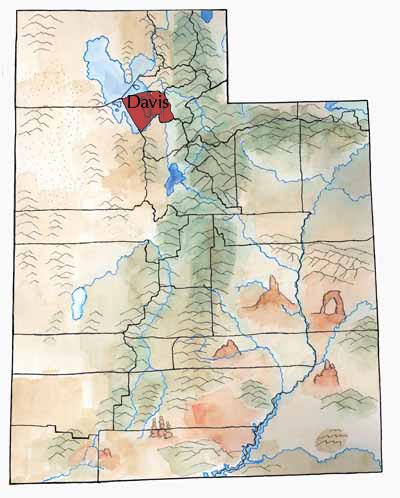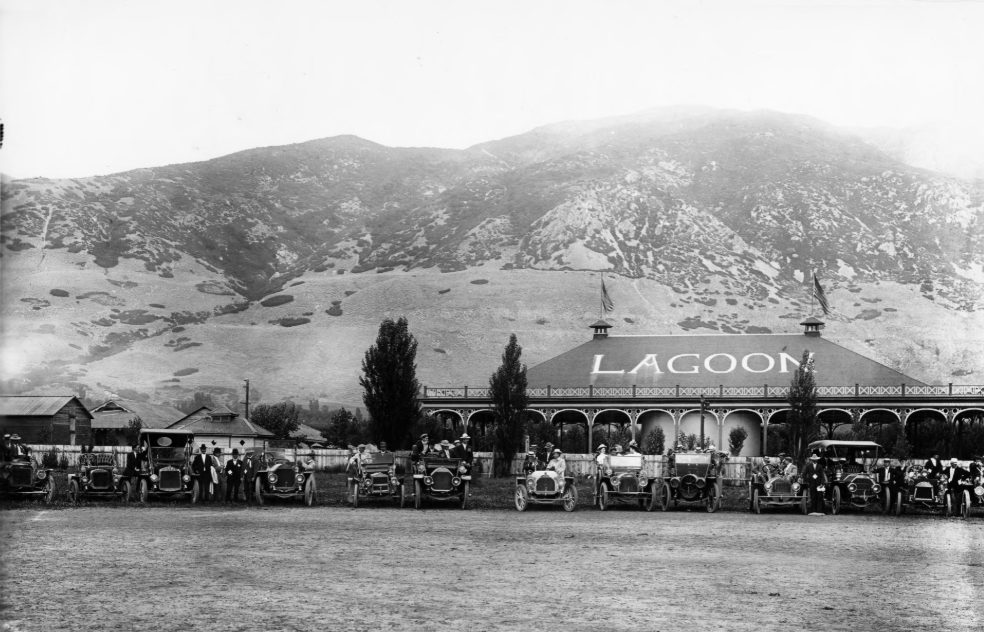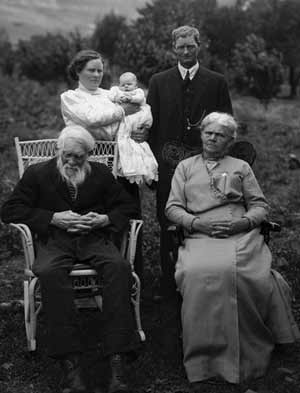The small county of Davis lies sandwiched between the Wasatch Mountains and the Great Salt Lake. The county boundary swings out into the lake to include the starkly beautiful Antelope Island. In fact, the lake takes up about 365 square miles of the county, leaving only 265 square miles of land. These numbers change from year to year, however. When the lake is low, it covers much less land area.

Streams from the mountains to the east have provided water for agriculture and, more recently, for a fast-growing population.
First Peoples
Indigenous peoples used the land and resources of Davis County as long as 12,000 years ago. We know that Fremont groups lived at least part of the year on the shores of the Great Salt Lake or on its islands. State History archaeologists and volunteers have excavated and analyzed a Fremont campsite on Antelope Island.

More recently, Shoshones, Utes, and Paiutes all used the land, mostly passing through as they hunted and gathered foods.
History
Several white explorers came through the area, including Jedediah S. Smith in 1826 and Jim Bridger. Captain John C. Fremont visited Antelope Island in 1845. He named the island after the herds of antelope he saw there.
When the Mormon pioneers came into Utah, they quickly moved livestock into the area to graze. Peregrine Sessions was the first to bring his family into the area, setting up house in what is now Bountiful.
By 1850, when the territorial legislature created Davis County, many farms dotted the south half of the county.
By the 1870s the county was clearly the garden spot of Utah. In addition to producing bounteous harvests and prize-winning livestock, Davis County farmers were bold experimenters. They tried new crops, such as sorghum and alfalfa; new equipment, such as headers and threshers; and new methods, such as dry farming and irrigation management.

Farming laid the base for prosperity. By 1910 the county had two gristmills, two plant nurseries, eight irrigation companies, and six canning factories. Five years later it also had a sugar factory. New schoolhouses, churches, stores, and other structures popped up on the landscape. Three railroads moved people, produce, and goods in and out of the county.
Economy
World War II brought big changes to Davis County. Farming slipped behind defense as the most important part of the county’s economy when the U.S. Army built Hill Air Force Base (HAFB) and the Naval Supply Depot in the north part of the county. Lots of people got jobs at these military installations. And lots of people moved to the county from distant places for these jobs.

When the Navy depot closed, businesspeople bought the buildings in 1963 and made them into the Freeport Center, a bustling manufacturing and distribution center.
New housing and suburbs developed around Freeport and HAFB. The southern part of the county grew fast, too, as people who worked in Salt Lake City bought houses in Davis County. All those new people needed stores, restaurants, and other businesses nearby, so the county economy also grew.
Although it is the state’s smallest county in land size, Davis is one of the fastest growing in population. The number of residents doubled between 1940 and 1950, doubled again by 1960, doubled again by 1975, and doubled again by 1996. Now it is Utah’s third most populous county.
Did you Know?
| Utah’s first courthouse was completed in 1855 in Farmington. |
| Powerful east winds sometimes blow down the canyons—at times strong enough to damage roofs, uproot trees, and overturn trucks. |
| Devastating floods hit Farmington and Centerville in the 1920s. |
| Hill Field (now Hill Air Force Base) and the Naval Supply Depot in Clearfield were built up during World War II. |
| Lagoon Resort, which opened in 1896, became one of Utah’s first desegregated recreational spots, allowing full access to African Americans in the late 1940s |
Fast Facts
Area: 630 Square Miles
County Seat: Farmington
Where it got its name: Captain Daniel C. Davis of the Mormon Battalion
Main Cities and Towns: Layton, Bountiful, Clearfield, Kaysville, Centerville
Keep Exploring!
Return to the County’s home page here.
Return to the I Love Utah History home page here.